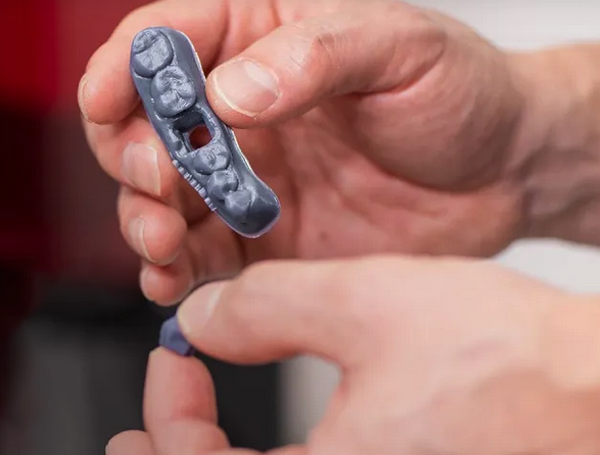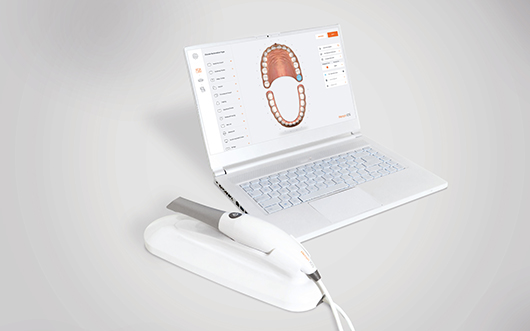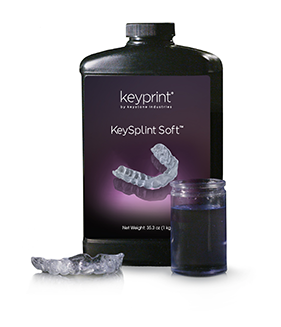 S2K Commerce - Products Dropdown
S2K Commerce - Products Dropdown
 Web Content Viewer - Blog
Web Content Viewer - Blog
Dental 3D Printing: Overcoming 3 Common Fears to Create a Better Patient Experience

As digital dentistry continues to make its way into the general dental practice, doctors now have greater access to new technologies and advanced materials that allow them to become more efficient in treating their patients. 3D printing creates an opportunity for mass customization, same-day designs, and repeatability—saving time and cost for the doctor.
While early adopters of digital technology are off and running in this new dental world, some doctors understandably remain wary of change. The 3 most common fears to adopting 3D printing are:
- Not understanding the full 3D digital workflow
- Inadequate return on investment
- Staffing and training concerns
Benjamin Taylor, 3D Printing Engineer at Keystone Industries, shares insights on how to concur these fears.
What are the basics of 3D Printing Workflow?
1. Choose an open-source design software and reputable intraoral scanner.
Digital scanning technology is certainly the future of dentistry when it comes to communicating with the lab and designing/fabricating restorations in the dental office. DHP offers reputable intraoral scanners by 3Disc, Medit, Midmark and Kulzer, LLC. 3Disc scanners are open architecture to allow for export to any CAD software solution in a variety of formats including STL, PLY, OBJ and DWOS project files. Once the scan is completed, digital design is the next step, which can either be outsourced or performed in-house using software, such as EXOCAD. Once the digital design is completed, you are ready to 3D print.

2. Choose a 3D Printer that guarantees optimal printing accuracy with the validated resins.
Consider the following factors:
- Your production needs vs. the printer’s capabilities
- Your desired accuracy requirements vs. printer capabilities, printer resources, and support
- And, most importantly, the availability of validated materials
It may seem appealing to purchase the cheapest printer on the market, pour resin in, and adjust random settings until your print is visibly acceptable. However, that does not guarantee the accuracy, safety, and efficacy of the final product. Using a printer with validated materials not only gives you access to validated print settings and resources but provides you with peace of mind in knowing you’re providing an accurate product to your patients.

3. Follow a validated post-wash protocol.
3D resins, which are alcohol solvable, a small wash station with Isopropyl Alcohol (IPA) with 97%+ purity is necessary to fully remove residual resin from the 3D parts before final curing. Some printer companies offer their own wash station to users, while others use ultrasonic, stir, or shaker tables. The process of washing your 3D parts is highly important and most material companies offer guidance to achieve a successful wash. When cleaning your 3D parts, I recommend using soft brushes, timed washes, and compressed air for drying. Most resins, especially biocompatible resins, should not exceed 5 minutes of submerged IPA exposure or the device is susceptible to absorb IPA, causing a bad taste in splints, potential fractures in surgical guides, or decreased physical properties in models.
4. Additional UV curing is required after printing to ensure biocompatibility for intraoal use, color stability and ideal physical properties.
The post-curing step is a critical part of the 3D printing process. A 3D printer is curing the part up to about 80%, so additional UV cure is necessary for 3D parts to gain ideal physical properties and enough cure for biocompatibility. Ensuring that the post-cure unit you use is tested and validated with both your printer and material not only guarantees the efficacy of your final device, but also provides a worry-free workflow that has been approved for accuracy and safety. For biocompatible resins, including splints, night guards, and surgical guides, it is important to follow every step with a validated workflow to ensure the part is safe for your patient. In my experience, customers' issues with splints smelling or tasting bad have been a direct result of not following a validated workflow.
Is 3D Printing Worth the Investment?
The Journal of The American Dental Association states that “the low cost and simple workflow of additive 3D printing has potential to improve precision and efficiency in clinical dentistry for both academic and private practices.”
Moreover, 3D Printing provides plenty of opportunities to lower overhead costs and labor time, reduce material costs, and increase revenue for your practice. So, is it worth the investment? Let’s take splints and night guards as an example. Using Keystone’s KeySplint Soft allows you to customize a comfortable and strong splint for every patient, yield quick production turnaround times, and reproduce any splint on demand. Whether you fabricate 1 or 5 splints a day, you can limit active labor costs and ultimately streamline your splint production. Click here to view the KeySplint Soft Value Proposition for the General Practitioner.
How do you overcome staffing and training concerns to accommodate 3D Printing?
Now that you understand the workflow, equipment, and potential of 3D printing, you may be thinking, “Do I need additional staff members? What training is involved?” Fortunately, early adopters of 3D printing technology have forced manufacturers in the 3D printing space to work together and cater resources to dentists’ needs. For example, active labor time is limited to design development, nesting, post wash, and post processing. Certain printer companies offer endless support and resources for easy in-house training. It’s important to ask questions and fully understand what training is required for you and your staff before investing.
The 3D digital workflow can easily be mastered, and choosing a validated workflow is key to ensuring not only that the dental devices you fabricate are dimensionally accurate and safe, but that you get the best return on your investment while allowing your practice to become streamlined and efficient.
You are ready, get started today!
In the next few years, the dental market anticipates more 3D printers, continuous innovation in technology, and ongoing material development.
Contact one of our Experienced Equipment Specialists to get started today!
